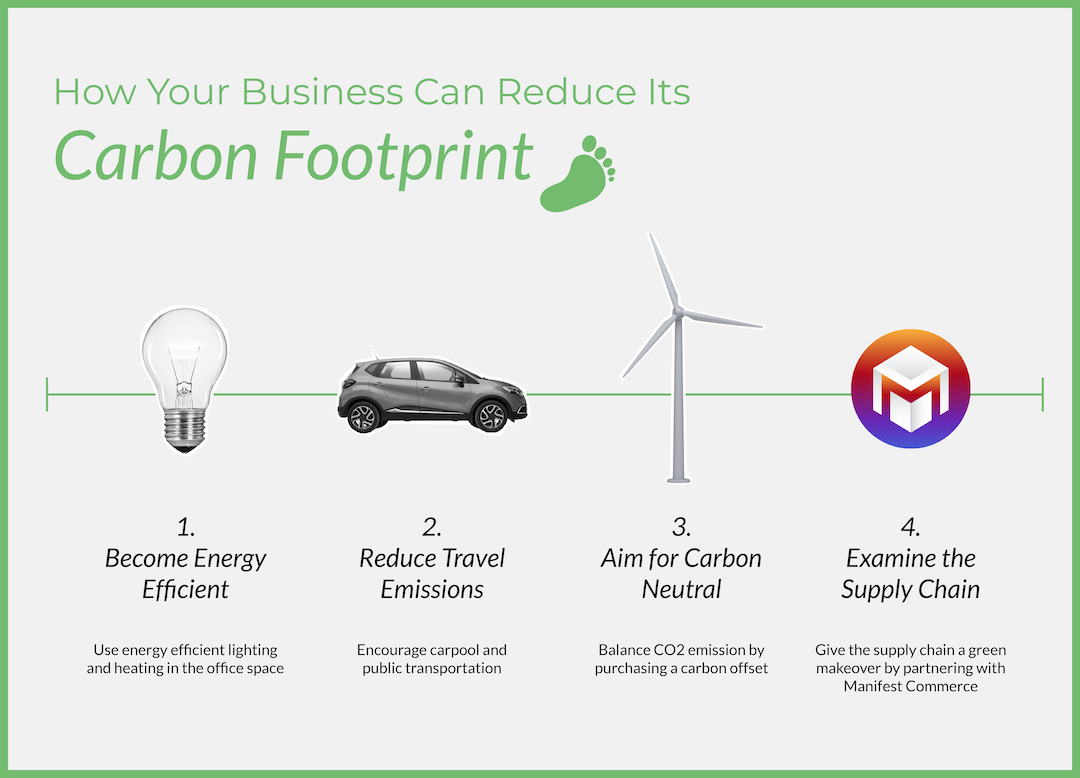The phrase “carbon footprint” has wormed its way into most people’s everyday vocabulary for the last 20 or so years. Inspired by William Rees and Mathis Wackernagel’s theory of an “ecological footprint,” which is the total area of land needed to sustain a population, the idea of a carbon footprint has grown into one of the biggest sustainability buzzwords out there.
The term exploded in usage after the oil company British Petroleum created a marketing campaign centered around the idea of a personal carbon footprint for every individual person. While, in some ways, this has helped people quantify their environmental impact, it also shifted the public’s attention from large companies (like BP) effect on pollution onto individuals.
For this reason, the topic of a carbon footprint is sometimes difficult to talk about! On the one hand, it can be a great way to measure a human being or company’s effect on the planet, but on the other hand, it has helped many large companies avoid responsibility and perpetuate climate change, simply so they can continue to profit. With just 20 companies worldwide contributing around 30% of the world’s pollution, it can be frustrating to see the blame come back to the people rather than the corporations that are causing the most harm.
Unfortunately, there’s not much we can do to stop those corporations at the moment, but thankfully, there’s still plenty of things we can control that will push us in the right direction. Despite the social implications it has caused, the measure of a carbon footprint is still a decent way to visualize environmental impact!
If you take the time to figure out your business’s carbon footprint, you can begin to figure out ways to reduce that footprint. It won’t instantly cure the climate crisis, but every step matters.
Carbon Footprints
To figure out the carbon footprint of anything, person or corporation, you’ll have to do a little math. Your carbon footprint is comprised of several different sources, from travel and accommodation to food and even shopping!
A carbon footprint is the total amount of greenhouse gases that are generated by an individual or corporation.
Before you start to panic and whip out a calculator of your own, don’t worry: there are plenty of carbon footprint calculators available on the internet. Just make sure you search for one that will apply to businesses instead of just an individual.
4 Ways To Reduce Carbon Footprints
For the most significant impact, try to bring the few ideas below to your business or company so that as many people as possible can get on board! Reducing your individual carbon footprint is admirable, but ultimately, you’ll make more of an actual impact if you can get your company to join you!
Become Energy Efficient
One of the most significant contributors to business carbon footprints is energy use. To combat this environmental drain, your company can invest in energy-efficient lighting and work to make sure all of your office products are ENERGY STAR certified. Making small switches can also help, such as monitoring the heating and cooling systems in your office
If you’re having trouble convincing your company to make the switch, have them consider this:
Creating a more efficient and sustainable energy system will reduce your company’s greenhouse gas emissions and cut costs on your company’s energy bill.
Once your company realizes that they can save money and the environment, you might have an easier time implementing this!
Reduce Travel Emissions
This next suggestion pertains more to the employees of a company, as opposed to the company itself. Within your business, try to encourage more sustainable methods of transportation when going to and from the office. If most people drive their own personal vehicles to work, you can seriously cut into your company’s carbon dioxide emissions by changing some protocols.
Encourage carpooling or ride-sharing options, particularly for people who live near to each other. Similarly, if public transport is a viable option for employees, encourage as many people as possible to use it! By reducing the number of personal cars on the road, you can reduce the overall pollution that indirectly results from your business.
Aim for Carbon Neutral!
If there’s a specific end goal of reducing businesses’ carbon footprint, it’s reaching carbon neutrality. To achieve carbon neutrality, a company must balance its carbon dioxide emissions by removing an equivalent amount of carbon dioxide from the environment. The most common way to do this is through purchasing carbon offsets.
When you buy a carbon offset, you are helping to fund projects that focus on CO2 emissions reduction. While this doesn’t necessarily remove carbon dioxide directly from the environment, it helps to balance the carbon that has already been emitted.
Examine The Supply Chain
Finally, if you really want to overhaul how your company handles its carbon dioxide emissions, you should encourage an audit of your supply chain. Because there are so many moving parts, many supply chains are efficient and produce much higher levels of greenhouse gasses than they need to. By partnering with companies like Manifest Commerce, you can easily give your supply chain a green makeover.
We provide carbon-neutral fulfillment, plastic-free packaging, and green warehousing services across a variety of industries and companies, meaning we handle the hard work while your business takes a big step toward becoming entirely earth-friendly!

Changing The Supply Chain For Good
Every little bit towards sustainability helps, from fossil fuel reduction, to simply eating local! However, a great way to make more of an impact is through your business and its carbon footprint.
We can help you and your business make the cuts you need in order to provide green shipping and supply chain logistics from top to bottom. It’s not just a good idea; it’s the only way towards a sustainable future! Our planet is counting on us.

